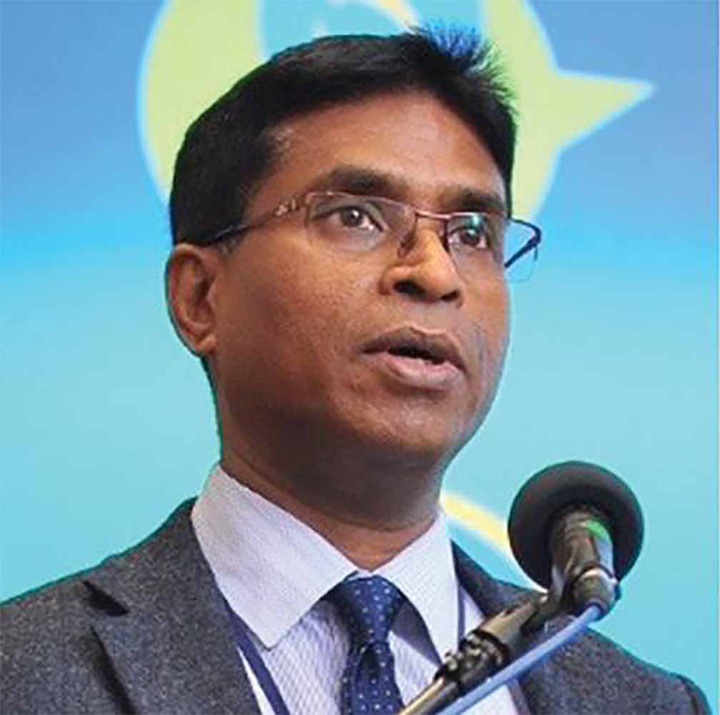
THE Asian Development Bank (ADB) has approved its 2021 Energy Policy which will guide its investments in the sector at least in the next five years.
In a presentation on Wednesday, ADB Energy Sector Group Chief Priyantha Wijayatunga said the main feature of the policy is the bank’s decision to cease financing for new coal-fired generation capacity in the region.
Wijayatunga said, however, that ADB’s last financing for coal-fired power plants was the Jamshoro Thermal Power Station in Sindh province in Pakistan. Based on ADB documents, the project is still active and has financing until June 2027.
“Our prohibition on financing new coal generation extends not just to the plants themselves but also to dedicated transmission lines, serving coal-fired generation plants as well as things like railway lines from the mine to the generation plants. So it is an integrated approach across [sectors],” ADB’s Sustainable Development and Climate Change Department Chief Sector Officer Robert Guild said during a briefing on Wednesday.
In paragraph 118 of the Energy Policy, ADB said a review will be conducted in 2025 to assess the progress in meeting the objectives of the policy. “Human and financial resources will also be reviewed in 2025 to take stock of ADB’s development effectiveness and ability to meet the requirements of DMCs in their long-term energy transition.”
Apart from veering away from coal investments, Wijayatunga said the new Energy Policy aims to accelerate the development of sustainable and resilient energy systems that provide reliable and affordable access to energy for all.
This is part of ADB’s commitment to foster inclusive economic growth and social development as well as support the low-carbon transition in Asia and the Pacific. This, he added, will also ensure a just transition for those negatively affected by the energy transition.
“Support for natural gas and oil will depend on support for energy access, avoid carbon lock-in [in the case of gas], and strict screening criteria,” Wijayatunga added.
In a statement, ADB said the new policy is based on these principles—Securing Energy for a Prosperous and Inclusive Asia and the Pacific; Building a Sustainable and Resilient Energy Future; and Supporting Institutions, Private Sector Participation, and Good Governance.
ADB said the principles also include Promoting Regional Cooperation and Integration and Integrated Cross-Sector Operations to Maximize Development Impact.
These principles will allow the new Energy Policy to meet the Paris Agreement and the Sustainable Development Goals (SDGs), particularly SDG 7 on achieving Universal Access by 2030.
“This new policy locks in our strong commitment that ADB will not fund new coal power production,” ADB President Masatsugu Asakawa said. “Together with our elevated ambition to deliver $100 billion in climate financing to our DMCs in 2019-2030, it provides a clear path for ADB’s contribution to an environmentally sustainable energy future.”
ADB said progress on access to energy has been rapid across developing Asia and the Pacific. But roughly 350 million people in the region do not have an adequate supply and about 150 million people still have no access to electricity. Continuing economic growth and urbanization will require developing affordable and reliable energy systems with substantial additional electricity-generating capacity.
To respond, ADB said International Energy Agency scenarios suggest the region’s installed electricity-generating capacity could increase by about 7 percent per annum, from 3,386 gigawatts in 2019 to 6,113 gigawatts by 2030.
IEA added that investments in renewable energy generation in the region could reach $1.3 trillion per annum by 2030, doubling the amount from the previous decade.
Waste to Energy
ON Wednesday morning, the Global Alliance for Incinerator Alternatives (GAIA) Asia Pacific recommended that the ADB delay voting on the current version of its Energy Policy. GAIA said in a statement that the current version of ADB’s Energy Policy supports Waste to Energy (WTE) incineration efforts, making the Manila-based multilateral facilitate the increase in emissions in the world.
The civil society group cited estimates that by 2050, plastic disposal will generate 56 gigatons of emissions, covering as much as 14 percent of the Earth’s entire remaining carbon budget.
“We are firm that WTE incineration should not have a place in ADB’s Energy Policy aimed at accelerating Asia’s energy transition. Investment in WTE incinerators induces the exploitation of resources in the face of a climate emergency,” GAIA Asia Pacific said.
“We urge the Bank to delay the voting and consider [our] critical recommendations.”
These recommendations, GAIA said, include the suspension of all WTE projects in the ADB pipeline; committing to a gradual phaseout from WTE investments in the next five years; and declaring a no-go zone on WTE investments.
GAIA also recommended that the Manila-based multilateral bank align its WTE provisions with the Intergovernmental Panel on Climate Change (IPCC) guidance on renewable energy.
“The Asia-Pacific region is home to Zero Waste solutions. Cities and communities have demonstrated that these Zero Waste strategies are more effective in reducing waste generation, improving collection and recycling rates, and creating jobs. We welcome support for these solutions,” GAIA Asia Pacific said. “We demand a path in favor of a toxic-free Covid-19 recovery towards a just and climate-resilient future.”
Based on Paragraph 71 of the R-Paper of the approved 2021 ADB Energy Policy, ADB said it will support WTE investments for heat and electricity “provided that the feedstock for combustion results from a prudent order of waste management priorities.”
ADB believes WTE investments can improve local environment and health by removing the hazards caused by “open waste dumping and open burning.”
The Manila-based multilateral development bank also committed to support projects that promote the circular economy and other “holistic” options.
These options include reducing waste generation; exploiting the options for reusing and recycling materials; using waste to recover energy or usable materials; and sanitary engineered landfilling, which will be the last option.

